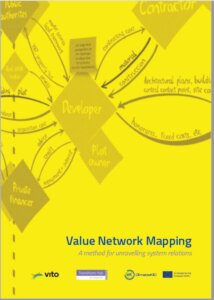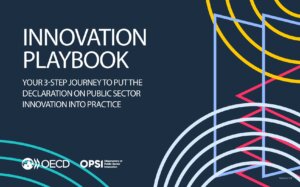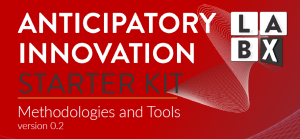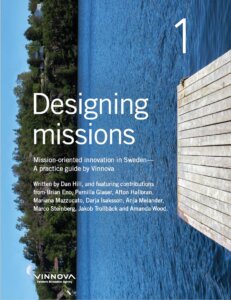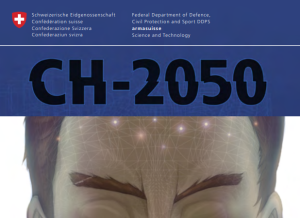We all know what the problems are, right? It can be easy to make this assumption as well as assume we know how problems are linked. A poorly defined or nuanced problem – common in the public sector – is much more difficult to solve than a problem you have clearly defined and understood.
You may not even know what the problem is–it may be an unknown, ambiguous mess or a sense that what is differs from what might, should or could be. The way a problem or situation is understood and framed has a huge impact on the range and types of possible solutions. For instance, understanding the way that interactions, services, operations, policies, and outcomes are linked can help determine the best way to introduce experiments, solutions, and policies later. Many of us like to start with a solution because it is tangible and perhaps because it worked elsewhere. However, resist the temptation to skip directly to ideas and solutions before the problem is understood.
When approaching an novel situation, consider the relationship between cause and effect. The difference between a complicated and complex problem may seem nuanced, but the difference in approach is enormous. Many public sector problems are approached as if they are complicated, as if cause and effect are knowable, when many are actually complex or “wicked,” with cause and effect only apparent in hindsight and only predictable as patterns. The Cynefin framework and other complexity navigation and contextualisation frameworks offer great guidance on distinguishing and approaching these different types of problems.
Also, when facing a problem, consider:
- Is the problem clearly defined?
- Is there certainty about the nature of the problem?
- Is there agreement about the problem?
- Is the problem likely to stay the same through the problem-solving process?
- Are there existing, generally accepted solutions?
- Is there previous experience with the problem?
- Is there a lack of a clear and engaged owner(s) of the problem?
- Is there a high level of discretion about how to respond?
If the answer to most of these is “no,” you are probably facing a complex and ambiguous problem space and should choose methodologies that are well suited to that environment.
Time spent on understanding a problem, individually or as a team or organisation, can save you time and reduce the risk of introducing expensive but ineffective solutions. Most of us underestimate the work needed to do this well, especially when working in partnership with others. However, if your collaborators are brought in during this step, not only will you receive a richer perspective of what is going on but your collaborators will be more likely to understand the situation and realize their active role in the solutions. But beware, too much collaboration early on can lead to consensus-driven reinforcement of the status quo. An approach involving safe-to-fail learning experiments and reflection can help with orienting and contextualising the problem(s).
Depending on the innovation methodology you choose, problem clarification may be called something very different: Learn, Discover, Understand, Fact-Finding, Research, etc.
All contain different ways of asking and answering the questions:
- What do we know?
- What knowledge is missing?
- What have we overlooked or assumed?
- What is changing quickly?
- Who considers this a problem and why?
- Which problems or issues are related and how?
Some methodologies focus heavily on answering these questions, including Futures and Foresight, Strategic Design, and Systems Change. Keep in mind that different methods use quantitative (data, statistics) and qualitative (narratives, stories) information to characterise the problem or situation. Human-centered or user-centered design fields involve much more qualitative data than other methodologies and many toolkits focus on collecting and making sense of this type of data.
You may end up with one or more problem statements. In many design practices, problem statements start with the stem: “How might we…” You will probably end up with many different possible problems and you and your collaborators will need to decide on where to start. You may even need to further explore the problem or dig deeper into its root causes. Many Design toolkits focus on techniques for this type of convergence and problem framing and reframing.
See toolkits that focus on problem solving, or if you are not yet sure which problem you are solving, see toolkits that focus on approach planning or contextualisation of a situation.
Depending on which phase of a problem-solving cycle you are in, related toolkits may apply. See toolkits that cover:
- Scanning
- Fact finding
- Insight finding
- Idea generation
- Problem framing
- Solution finding
- Acceptance testing
- Proposal development
- Deployment
- Solution adaptation
- Evaluation
- Reflection
- Diffusion
Do you need help?
How well-versed are you with problem solving tools and methods? Do you have experience with applying these approaches in practise? If not, then the language and complexity of the working methods can be daunting. Find help and connect to someone who has practical experience in addressing public sector problems. But be aware so that you do not get sucked into applying their favourite method.
Learn about building skills and capacity for problem solving
Find OPSI network members with problem-solving method expertise
Reach out to OPSI for guidance with problem solving
Request a webinar on this topic – top-requested topics will be prioritised


